Village Adopts Tree Code Amendments to Address Clear Cutting
- Details
- Written by Joanne Wallenstein
- Category: The Goods
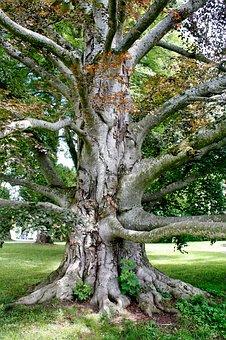 After years of debate, the Scarsdale Village Board approved changes to the tree code to address clear-cutting of trees, or the removal of large stands of trees. In April 2018 the Board approved amendments to the tree code which permit residents to remove up to two 24 inch DBH trees per year as of right, requiring permits and replacement trees for the removal of more or larger trees.
After years of debate, the Scarsdale Village Board approved changes to the tree code to address clear-cutting of trees, or the removal of large stands of trees. In April 2018 the Board approved amendments to the tree code which permit residents to remove up to two 24 inch DBH trees per year as of right, requiring permits and replacement trees for the removal of more or larger trees.
However it stopped short of addressing clear cutting, or the removal of groups or stands of trees. On Wednesday night 2-13, the board approved additional changes to address clear cutting and to require the planting of replacement trees on the property or payment into a tree fund to plant replacement trees elsewhere in the Village.
Introducing the amendments, Trustee Carl Finger explained that the proposed change would address clear cutting and allow the Village to plant replacement trees in other locations when it’s not possible to replace them on the property. These new tree removal laws do not apply to dead, dying, diseased or hazardous trees.
He said that the new laws apply to the removal of 6 feet and more (DBH) of trees, and “Will not affect 75% of people who are applying to remove a tree. People who are removing 1 or 2 trees will not be impacted. This will apply only when there is a large-scale tree removal.
Here is the amended law regarding tree removal:
The following trees removed pursuant to § 281-4, excluding § 281-3(D) and § 281-4(A)(6), shall be replaced with a replacement tree, when applicable for trees removed from the same property, whether by single or multiple tree removal permits, within any consecutive three year period, regardless of ownership. A tree removed pursuant to § 281-4, excluding § 281-4(A)(6), that is 24 inches DBH or greater shall be replaced with a replacement tree.
(1) A tree removed that is 24 inches DBH or greater.
(2) Permitted trees removed having an aggregate DBH of 48 inches or greater.
a. A replacement tree of a genus and species expected to grow to maturity at a similar size to the removed tree or trees shall be planted for every 24 inches of DBH removed up to 120 inches of aggregate DBH, excluding the aggregate DBH of any tree(s) removed pursuant to § 281-5(A)(1).
b. Two replacement trees of genus and species expected to grow to maturity at a similar size to the removed tree or trees shall be planted for every 24 inches of DBH removed above 120 inches of aggregate DBH and less than 240 inches aggregate DBH, excludingthe aggregate DBH of any tree(s) removed pursuant to § 281-5(A)(1).
c. Three replacement trees of a genus and species expected to grow to maturity at a similar size to the removal tree or trees shall be planted for every 24 inches of DBH removed above 240 inches aggregate DBH, excluding the aggregate DBH of any tree(s) removed pursuant to § 281-5(A)(1).
Here is the definition of a hazardous tree: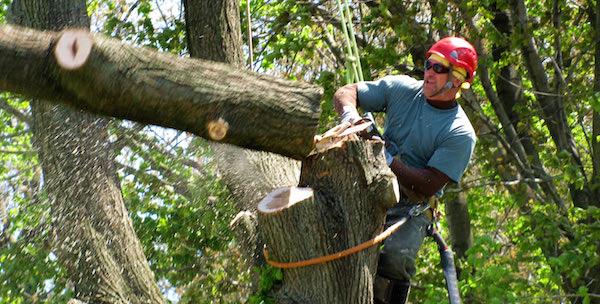
Any tree which meets two criteria: (1) a defect which will likely result in a failure, as determined in accordance with the ISA (International Society of Arboriculture) Risk Assessment Manual, and (2) the existence of a target; including structures, objects, power lines, or people that would suffer personal injury or property damage if said tree failed.
Reading a letter from the Conservation Advisory Council in support of the amendments, Ron Schulhof said, “It is an important update to our tree code to help maintain our tree canopy. It addresses large-scale tree removal and provides flexibility…. Trees provide social and environmental benefits.” Speaking about the code he said, “Significant research was done. Many meetings were held to provide community feedback. This is a thoughtful, reasonable update to the tree code.” (Read the full letter below.)
Joan Weissman of Kingston Road said, “These amendments are a step in the right direction. We know that developers are cutting down trees in record numbers. Common sense dictates that every tree that is cut down should be replaced with one that provides same benefits to the canopy…. Communities across the country have stronger tree codes and replacement requirements. The fact that we don’t have an arborist on staff is a problem. This (code) protects the health safety of our residents and I urge you to fulfill that responsibility.” (see her full comments below)
Michelle Sterling said, “Our canopy is a community asset. We have a 50% tree canopy. It’s what makes our town look so great. It can take a lifetime to replace a 24” tree. I appreciate the work that has gotten us here today and hope we can pass this amendment.”
Madelaine Eppenstein read parts of a letter from a letter submitted by the Friends of the Scarsdale Parks in support of the tree code. She quoted Professor Nina Bassuk of Cornell University who said, “A healthy tree population must necessarily be composed of large numbers of small young trees. It is these young trees that will grow into the large trees that make up the future landscape. Because of the dynamic nature of an urban forest planting, young trees must always represent a significant portion of the tree population to account for the loss of trees over time. Continued, active planting of young trees is crucial to maintaining a sustainable and resilient tree population. In the ideal tree population, there are a large number of small trees, with increasingly fewer trees in larger size classes. . . . each year new trees must be planted to compensate for future loss of the older trees.” (See the full letter below.)
Bob Berg of 32 Tisdale Road said he was opposed to the tree code odyssey and called the new law, “more complex than the tax code.” He said “this is overreaching on homeowners when the problem is the developers. This should be addressed by the land use boards.”
Bernard Kobroff of Brewster Road said, “I think this is a good start. I don’t think it goes far enough, but it is a good first step.”
In discussions that followed, Trustee Justin Arest explained that the code does provide a relief valve for those who think the Village engineer may be unfair. He also said, the aggregate test is not a bad idea by more analysis is needed to see if it is effective. He suggested a higher DBH before the code applied but said his suggestion was “rebuffed by the committee. “ He also did not agree that the code requires the the opinion of an expert to determine if a tree is a hazard. He said, “They could miss a hazard and leave it there.” He voted no to the amendments. (see his full comments below.)
Jane Veron said she was “on the board when we made the first set of changes to the tree law.” However she “engaged with residents during harrowing storms” and she is “concerned about language that relates to hazardous trees.” She said, “People think these trees put their families at risk.” She said, “I can’t support the definition of hazardous. I think this should lie with the land use board.”
Lena Crandall said, “I have been studying trees for a number of years. I have attended many lectures on the topic. When it comes to having a tree evaluated, most arborists will do a hazard inspection for free. If you need an ISA expert, www.treesaregood.com - where you can find an arborist . Check if anyone who claims to be an arborist is trained and certified… Fight fear with factual information
Get a second opinion. It takes many years for trees to grow to a meaningful size. Deforestation is changing our climate. The trees that we have slow the wind, cool your home in the summer and warm it in the winter.” She supported the amendment.
Carl Finger reassured the public, “This will not impact most homeowners … only the top 25% of tree removers who are mostly developers. This is targeted at the most significant tree removers. There is presently no definition for hazardous trees and no process for appealing the decision of the village engineer. Maybe the definition isn’t perfect, but it’s good – and it’s better than nothing. If you only remove one tree less than 24 inch DBH, you can take them out. Justin and Jane’s concerns are not born out by these changes.”
The resolution passed by a vote of 5 to 2 with Arest and Veron and voting no.
Comments from Joan Weissman:
Good evening. Joan Weissman 3 Kingston Road I am a member of the CAC, but I am speaking simply as a concerned resident.
The tree code amendments that are the subject of this hearing are a step in the right direction, and I commend the Board for taking that step.
We all are aware of the crucial role trees play in our environment—the legislative findings and statement of intent contained in Scarsdale’s tree code make clear their importance. Based on just the permits issued by the village last year, we know that developers and residents are cutting down trees in record numbers. Permit numbers, however, do not reflect all the trees that are cut down. Walk through our neighborhoods and you will see many properties that have one small tree where many had stood.
Common sense dictates that in order to maintain our tree canopy every tree that is cut down regardless of its size has to be replaced, and each tree has to be replaced by at least one that will provide very similar coverage at maturity. Cutting down a 60 foot oak and replacing it with a 5 foot arborvitae will do very little for our canopy.
Communities similar to Scarsdale across the country like Short Hills NJ and Winnetka Illinois have much stronger tree codes and replacement requirements. I recently had a conversation about Scarsdale’s tree replacement requirement with Dr. Nina Bassuk, a world-reknowned arborist and the director of Cornell’s Urban Horticulture Institute. Dr. Bassuk told me that when one 24” caliper tree is cut down, the best practice is to replace it with 8 3”caliper trees.
Dr. Bassuk also emphasized the need for oversight. Most of our surrounding municipalities have an arborist on staff either full-time or part-time. The fact that Scarsdale does not have an arborist on staff is startling, to say the least, and should be rectified. Our code is meaningless unless it is enforced.
Every tree that is cut down and not required to be replaced is a lost opportunity for the village. The Board of Trustees has the authority to protect the health, safety and welfare of our residents, and the proposed amendments fit squarely within that authority. More importantly, the Board has the responsibility, the duty, to protect the health, safety and welfare of our residents, and I urge you to fulfill that responsibility by passing these amendments. We must act now before it’s too late and we lose these precious resources that contribute so much to the well-being of our community.
Letter from the Conservation Advisory Council
The Conservation Advisory Council (CAC) supports the proposed amendments to the Tree code as submitted in the Board of Trustee packet dated February 13, 2019. The CAC believes the proposed amendments provide important updates to the Village Tree Code to help maintain Scarsdale’s beautiful tree canopy for current and future Scarsdale residents. The proposed updates provide a thoughtful solution to address large scale tree removals (commonly referred to as “clear cutting”) while maintaining property rights and flexibility for homeowners who either need to or want to remove trees on their property.
Scarsdale’s “Village in a Park” scenic setting is comprised of individual trees on each property in the community. Each individual tree contributes to the beauty of Scarsdale and is a cherished community resource. It is important we ensure this resource is maintained. In addition to being part of the landscape of the community, trees provide significant and important social and environmental benefits.
The CAC has been working with the Board of Trustees, village staff, other boards and councils and the community over several years to find a reasonable way to ensure the community’s tree canopy is maintained. Significant research was done, numerous proposals were considered, and many meetings were held to solicit community feedback. A complete archive of reports and presentations is available on the CAC page of scarsdale.com. The CAC believes the proposal being presented tonight represents a thoughtful and reasonable update to the Tree code.
The Conservation Advisory Council would like to thank the current and past Board of Trustees, Village Staff, Friends of Scarsdale Parks, former CAC members and other organizations for their work on this issue. We would also like to thank the many residents who have provided feedback over the years.
Respectfully Submitted,
Scarsdale Conservation Advisory Council
February 13, 2019
Letter from Friends of the Scarsdale Parks
Dear Mayor Hochvert and Trustees,
Friends of the Scarsdale Parks previously expressed support for proposed amendments to the tree chapter in their letter of March 21, 2018. There FOSP stated that:
The proposed changes further the Village commitment to protect public health, safety and welfare, while seeking a balance between the rights of residential property owners and the need to protect the environment and Scarsdale’s healthy tree canopy.[1]
FOSP was privileged to be part of the tree chapter working group and to have the opportunity to collaborate with Village staff and department heads on striking that sensitive balance between private rights and public responsibilities. As part of our research on that project, we were impressed by the preamble to the Pound Ridge tree code, which cites New York State environmental conservation law:
In adopting SEQR, it was the Legislature's intention that all agencies conduct their affairs with an awareness that they are stewards of the air, water, land and living resources, and that they have an obligation to protect the environment for the use and enjoyment of this and all future generations.[2]
That responsibility to protect the environment includes a municipality’s efforts to employ best practices for the maintenance and conservation of its natural resources, including its tree canopy cover. In this context, the new code provisions should not be viewed as restricting private rights, but rather as balancing them with necessary protections of our trees and the significant benefits they provide as an integral part of our green infrastructure.[3] Our trees have the capacity to “improve the quality of our urban lives by providing shade, reducing storm runoff, filtering air and providing homes for birds and insects.”[4] And as our ecosystems, and we, face the broad stresses of climate change, it will be Scarsdale’s trees that help us preserve the vitality and resilience of our natural environment.
In Scarsdale’s amended code, stewardship best practices will be better served, for example, by replacing trees of 24 inches DBH and over, which took many decades to reach that size, with several smaller trees that will, at maturity, continue to provide our Village with a vibrant green canopy. On this subject Nina Bassuk, Professor at Cornell University’s Urban Horticulture Institute, School of Integrative Plant Science (and FOSP lecturer in 2014), and her colleagues recommend a version of “aggregate” replacement as a sound way to stem tree canopy attrition:
A healthy tree population must necessarily be composed of large numbers of small young trees. It is these young trees that will grow into the large trees that make up the future landscape. Because of the dynamic nature of an urban forest planting, young trees must always represent a significant portion of the tree population to account for the loss of trees over time. Continued, active planting of young trees is crucial to maintaining a sustainable and resilient tree population. In the ideal tree population, there are a large number of small trees, with increasingly fewer trees in larger size classes. . . . each year new trees must be planted to compensate for future loss of the older trees.[5]
We wish to submit the following suggested revisions for your consideration in the interests of providing legislative clarity about aggregate replacement and enforcement:
that the reference to “replacement tree” in §281-5.A be clarified and reinforced by adding the definition as follows: “The following trees removed pursuant to §281-4, excluding §281-3(D) and §281-4(A)(6), shall be replaced with a replacement tree, native to the Northeast United States, excluding invasive species, and not less than three inches DBH, . . . .”
that to clarify the method of ascertaining the number of replacement trees required, there be added to the definition of DBH in §281-2, or in a separate listing, a definition of “aggregate DBH” as follows: “Aggregate DBH is determined by calculating the total of DBH measurements of trees removed.”
that the Village Engineer provide as part of permit materials a chart of the minimum number of replacement trees required to be planted, corresponding to the ranges of DBH enumerated in §281-5.A(2)a-c.
The subtext in this debate, over the tension between homeowner or developer prerogative and the need for reasonable regulation, is the indiscriminate destruction of the tree canopy on residential properties, regardless of ownership, and potentially declining public interest in planting right of way trees. This reality, coupled with the inadequacy of the voluntary right of way program to offset canopy deficit, underscores the need for a better regulatory framework as represented by the amendment – together with enhanced code enforcement.
Respectfully submitted by the following members of the Board of Directors, Friends of the Scarsdale Parks, Inc.:
Betsy Bush
Kay Eisenman
Madelaine Eppenstein
Bart Hamlin
Amy Laartz
Diane Morrison
Cynthia Roberts
Todd Wolleman
Julia Zimbalist
[1] Citing: J. Hamblin, “The Health Benefits of Trees” (The Atlantic 2014), at https://www.theatlantic.com/health/archive/2014/07/trees-good/375129/ , citing D. J. Nowak, et al., “Tree and forest effects on air quality and human health in the United States” (Environmental Pollution Journal, 2014), at (http://www.fs.fed.us/nrs/pubs/jrnl/2014/nrs_2014_nowak_001.pdf (“trees remove substantial amounts of pollution and can produce substantial health benefits and monetary values across the nation, with most of the health values derived from urban trees.”).
[2] Environmental Quality Review Act, or SEQRA, §617.1(b). Authority, intent and purpose, at https://www.dec.ny.gov/docs/permits_ej_operations_pdf/617fnlexptrms.pdf.
[3]SEQR, §617.2 (r), Definitions: “Green infrastructure” means practices that manage storm water through infiltration, evapo-transpiration and reuse including only the following: the use of permeable pavement; bio-retention; green roofs and green walls; tree pits and urban forestry; storm water planters; rain gardens; vegetated swales; downspout disconnection; or storm water harvesting and reuse.
[4] N. Bassuk, "Trees - the True Urban Warriors" (Biology, Earth and Environment, 2017), at https://www.scientia.global/dr-nina-bassuk-trees-the-true-urban-warriors/ .
[5] N. Bassuk, G. Denis, Y. Harada, B. Neal, “The State of the Elms on the National Mall in Washington, D.C., Tree and Soil Conditions” at p. 10 (April 2018), at https://www.researchgate.net/publication/324482776_National_Mall_Elms_20180407 . These experts also recommend the following regarding species distribution: “Maintaining a diverse species composition is a good way to maintain a healthy, resilient tree population. A general guideline in urban forestry suggests that an urban tree population should include no more than 10% of any one species, 20% of any one genus, or 30% of any one family. While it is debatable if this guideline is appropriate for a monumental landscape such as the National Mall, it underscores the importance of tree diversity to reduce the risk of catastrophic loss.” Id. at p. 11. See also H. Sjöman, A. Hirons, N. Bassuk, “Improving confidence in tree species selection for challenging urban sites: a role for leaf turgor loss. Urban Ecosystems” (2018), at https://www.semanticscholar.org/paper/Improving-confidence-in-tree-species-selection-for-Sj%C3%B6man-Hirons/6ad219dfb9248da562a2e877263f797635972515.
Comments from Justin Arest
At the April 24, 2018 Board Meeting I made it clear that I was not really satisfied with the changes that had been proposed. They would not directly address a major concern that has environmental and aesthetic impacts, which is clear cutting. The process for that tree amendment had been over four years in the making and a previous board, to which I was not a part of, made the conscious decision to remove aggregate language in favor of something closer to what was adopted and hoped to use the land-use process to counter clear cutting concerns. I also was not in favor of making the code too restrictive for regular homeowners which is what an earlier draft of the proposed legislation would have done. I had intended to vote no. However, amendments made, including that evening, turned the proposed legislation into something that I believed was palatable and an incremental step that I could support. I believe we find ourselves as a community in a rather tough position. We are proud of our brand as a village in a park. I am extremely cognizant that such an impressive distinction is not one that can be created overnight but can be destroyed in a relatively short amount of time if the proper protections are not in place. However, we are also dealing with an aging tree stock and weather patterns that are only getting more punishing. Many residents, rightfully so, have significant safety concerns for their families and we need to find ways to incentivize homeowners to maintain and turn over their tree stock. We have not given our previous change a full year and spent time to analyze the relevant data in order to determine how effective the changes have been. To anyone that has concerns that we have left the community naked, the code has always permitted a rather high level of discretion from the village engineer. Such discretion is a defense against clearcutting when used properly and allows the Village Engineer to require additional replacements and/or monies to the tree fund. I should note that there is one change I have been a strong proponent of for sometime and do appreciate- which is providing a relief valve for residents that feel the engineers discretion might be unreasonable. When a village employee is given such discretion I believe it is only fair that a resident has an appeal process to pursue rather than being forced to go to court immediately.
Turning specifically to what is being discussed tonight:
The idea of an aggregate is not a bad idea. But, if we are truly using it here as mechanism to prevent clear cutting, more analysis is required to ensure that not only does it achieve that goal but also ensures that regular homeowners will not be overly burdened while trying to make improvements to their home for safety or otherwise. I tried to help find consensus while at the committee meeting by suggesting a higher level of aggregate DBH before the new changes would apply. I think that a higher number would still ensure clear cutting is affected, we would still have our engineer’s discretion should it not be enough, and there is a much smaller chance that it would harm homeowners with smaller projects. My suggestion was to work with that new structure for a set period of time and use the data collected to determine whether more changes would be needed. Unfortunately, this was rebuffed by the committee.
One other concern that I have is regarding the creation of a definition for Hazardous. I understand that our engineer had some concerns but we unfortunately did not have enough discussions on this. The new definition requires not only proximity to a target but also an expert opinion that there is a defect in the tree that will likely result in failure. This is concerning because it adds an extra cost as well as delays to homeowners trying to remove what they perceive as a risk and also does not address what happens if the expert does not find or misses a defect. Could this create a deterrent that prevents trees that could pose threats from being removed? I have a report given to the town of Weston, CT from Bartlett Tree Experts. It is a Tree Risk Assessment Report done by an ISA Qualified Tree Risk Assessor. In the Appendix of this report, it reads in part, “However, the overall risk rating, the mitigation recommendations, or any other conclusions do not preclude the possibility of failure from undetected conditions, weather events, or other acts of man or nature. Trees can unpredictably fail even if no defects or other conditions are present.” We have already agreed that these are trees that pose a potential threat to a target such as a home or children’s play area. I think we can do better.
Therefore, I do not intend to support the proposed changes as currently drafted. Thank you.
Fox Meadow Fifth Grader Competes on Master Chef Junior
- Details
- Written by Joanne Wallenstein
- Category: The Goods
 Fox Meadow fifth grader Shannen Hosman is one of 24 junior chefs who competed on the television show Master Chef Junior Season 7. The 24 contestants, ages 8 through 13 flew to Los Angeles to cook and compete for the title and $100,000 in prize money.
Fox Meadow fifth grader Shannen Hosman is one of 24 junior chefs who competed on the television show Master Chef Junior Season 7. The 24 contestants, ages 8 through 13 flew to Los Angeles to cook and compete for the title and $100,000 in prize money.
The kids were presented with a “Mystery Box Challenge,” and had to come up with breakfast from the contents of the box. The contest was judged by host Gordon Ramsay, pastry chef Christina Tosi, and restaurateur Aarón Sánchez and will be aired on March 5.
We asked Shannen a few questions about the experience and here is what we learned:
At what age did you start to cook?
I started to cook when I was 7 years old.
What were some of the first dishes you liked to make?
I really like to make lamb chops with potatoes, mushrooms, and other vegetables.
How did you learn about the Master Chef show and what did you do to apply to compete?
My mom found out that master chef junior was open for kids to apply through social media. So she asked me and my sister if we wanted to participate in this competition. When me and my sister found out we were extremely happy. We always would watch Master Chef Junior at home, so of course we wanted to participate.
Where did you go for the taping of the show and what did you do there?
My dad and I had to go to LA, California in order to tape the show. On master chef junior you have to compete against other kids to pass the Elimination round. In order to pass your food has to look and taste excellent. At the end if you win the final round you get a trophy and 100,000$.
What did you do to prepare for the competition?
To prepare for the competition I had to work on my cooking skills and being creative with new cooking recipes.
Can you share your recipe for Yellow Turmeric Grilled Chicken with a Vegetable Medley?
Sorry but the yellow turmeric grilled chicken with a vegetable medley is one of my secret dishes so I can’t share the recipe. Sorry.
What did you cook in the competition in Los Angeles?
Unfortunately I can’t answer this question. Because by contract we cannot share any information before show airs on tv. We are not permitted to give any information to spoil the upcoming episodes.
What else do you enjoy in Scarsdale - what are your favorite subjects or activities?
In Scarsdale I like to hang out with the Gucci Gang (my best friends from school ), go to Haagen Dazs and Scoops, play for Fox Meadow elementary schools basketball team, and go biking with my family to Edgewood park.
Shannen can be seen on Master Chef Junior on Fox on March 5.
Fire Engulfs 72 Mamaroneck Road
- Details
- Written by Joanne Wallenstein
- Category: The Goods
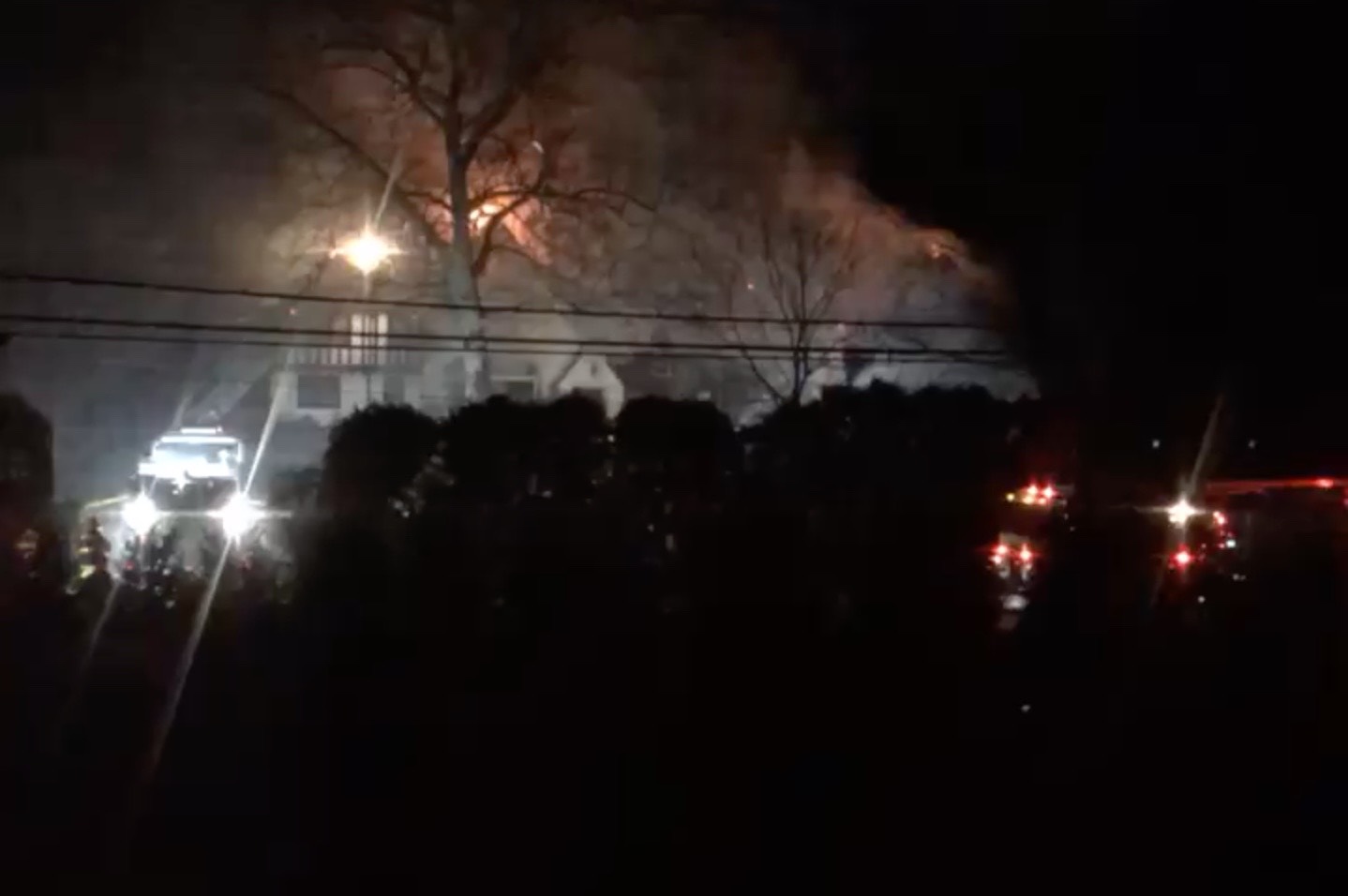 A massive house fire broke out at 12:57 am on January 21 at 72 Mamaroneck Road. When police arrived, five members of the family were outside and reported that one family member was still inside on the third floor of the house. The homeowner re-entered the house with three police officers and was able to find 13 year-old nephew and escort him out of the house. The homeowner along with his three children, a nephew and two grandparents were inside the house at the time of the fire. The mother of the children was reported to be out of town.
A massive house fire broke out at 12:57 am on January 21 at 72 Mamaroneck Road. When police arrived, five members of the family were outside and reported that one family member was still inside on the third floor of the house. The homeowner re-entered the house with three police officers and was able to find 13 year-old nephew and escort him out of the house. The homeowner along with his three children, a nephew and two grandparents were inside the house at the time of the fire. The mother of the children was reported to be out of town.
Heavy fire and smoke inflitrated the walls and attic of the large Tudor style home and the subzero temperatures turned water to ice and made it extremely difficult to fight the fire. The fire may have begun in the basement of the home. Firefighters battled the blaze for six hours, rotating in shifts due to the harsh conditions.
The family had moved in only four months ago. They all left the house safely but were wearing only their nightclothes.
The blazing fire caused heavy smoke and sparks to fly to neighboring homes where some were evacuated and Mamaroneck Road was closed. The fire was battled by about 80 firefighters from Scarsdale and neighboring crews and was still not under control in the morning. Under the mutual aid agreement crews from Eastchester and Greenburgh assisted in the effort.
The house was originally built in 1927 and was sold to the family in July 2018 for $2,725,000. It has 8 bedrooms, 7 baths, 7,836 square feet of living space, a pool and a poolhouse. Firefighters say that the house will now have to be razed.
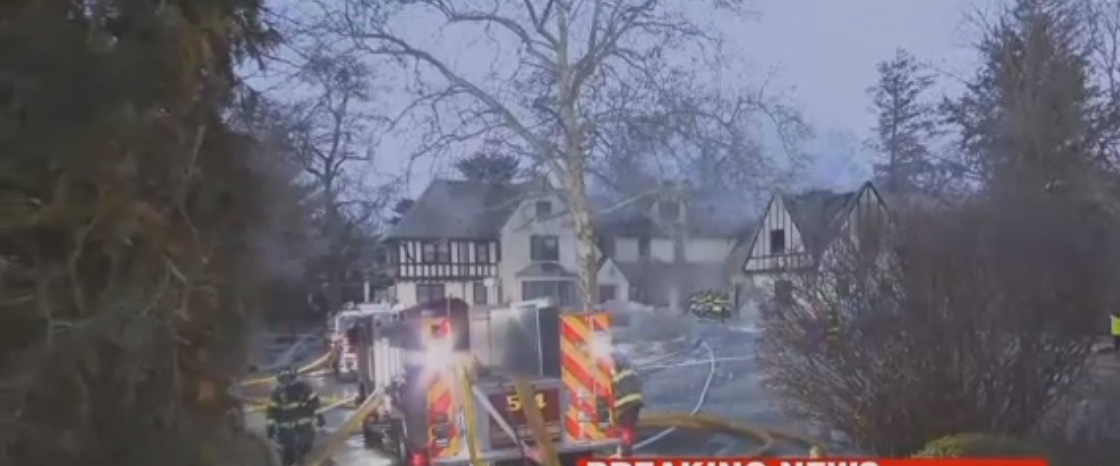
SBNC Chair Reviews Election; Says Volunteerism is Waning
- Details
- Written by Joanne Wallenstein
- Category: The Goods
 How well is the non-partisan process for selecting Scarsdale School Board candidates working? That was the subject of a meeting of the League of Women Voters of Scarsdale on Monday January 28 when they invited Wendy Gendel, Chair of the SBNC Administrative and Vice Chair of the SBNC Joint Committee to discuss the election on January 8, 2019.
How well is the non-partisan process for selecting Scarsdale School Board candidates working? That was the subject of a meeting of the League of Women Voters of Scarsdale on Monday January 28 when they invited Wendy Gendel, Chair of the SBNC Administrative and Vice Chair of the SBNC Joint Committee to discuss the election on January 8, 2019.
The School Board Nominating Committee is an elected committee with 30 members – six from each of Scarsdale’s five elementary school areas. These nominators each serve three years on the nominating committee – and another two years on the administrative and joint committees where they recruit candidates, supervise the election and the process.
The goal is to have contested elections for each of these seats – so that nominators are democratically elected. However, Gendel told the League that finding candidates who are willing to run and contributions to fund the election have become very challenging.
In fact, it was so difficult to find candidates, that all the nominees ran uncontested and one seat remains unfilled, leaving a committee of 29 not 30 members.
Gendel cannot definitively say why this is the case, but she did have a few theories about why residents were reluctant to volunteer.
First she cited the five- year term saying volunteers were reluctant to make a commitment that spanned so many years. She suggested that the resolution might be changed to separate the three year commitment to serve as a nominator from the additional two years on the administrative and joint committees.
Furthermore, Gendel said she had anecdotal evidence that the contested election for school board last May might have deterred some from agreeing to run. She thought that residents did not want to get involved in a partisan fight and remembered that there was controversy among SBNC members about their role in campaigning for the candidates selected by the committee. There is no official policy on candidate endorsements for members of the SBNC.
Gendel also noted a general decline in volunteerism in general and asked the League to consider a campaign to promote volunteering in Scarsdale. She reported that the committee reached out to 206 people and invited them to run and also used local organizations, local media and the PTA’s for candidate recruitment.
Another concern was the finances. The election is now paid for via voluntary contributions and the SBNC’s coffers are running low. Funds are needed to mail out election information including candidate’s bios before the election in January.
Voter turnout also lagged this year, with 240 residents voting in person and 6 absentee ballots received. This compares to 460 votes cast last year where there were contested election for nominator’s seats.
Following the meeting with Gendel, the League held a consensus meeting to draft a statement on the School Board Nominating Committee Election. When the statement is released, we will share it with you on Scarsdale10583.
Boys Hockey Gaining Momentum on the Ice
- Details
- Written by Alexandra Wilson
- Category: The Goods
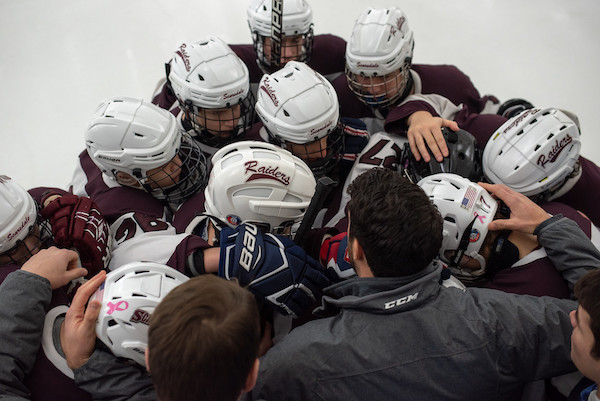 Scarsdale Boys Varsity Hockey team is gaining momentum that could potentially carry them deep into the playoffs.
Scarsdale Boys Varsity Hockey team is gaining momentum that could potentially carry them deep into the playoffs.
The Raiders have been riddled with injuries this season and have not had a game with the entire team healthy, yet they still have an impressive record of 7-4. “Up until recently we had a very average record, hovering right around .500, but I think most of those losses in the beginning of the season were very winnable. Now that we are finally starting to win the close games, we’ve put together a four-game winning streak,” said Captain Josh Bock ’21.
 Raider Rooters get Spirited with Costumes.A possible explanation for the Raiders’ midseason improvement is that with experience they are beginning to mesh. Since a whopping eight seniors graduated last year, the 17-man team consists of eight veteran players, four players who were pulled up to varsity at the end of last season, and five new players. This means that the team is relatively new and young, and they started the season without much playing history. With this in mind, the players began training hard to build experience. “We are usually on the ice four to five times a week and off the ice one to two times a week. Off-ice sessions include lifts, cardio work, and film [from past games],” said captain Jack Brosgol ’19. With this strong foundation of training, the underclassmen have become seasoned and ready for the upcoming games, and the upperclassmen have elevated their skill sets.
Raider Rooters get Spirited with Costumes.A possible explanation for the Raiders’ midseason improvement is that with experience they are beginning to mesh. Since a whopping eight seniors graduated last year, the 17-man team consists of eight veteran players, four players who were pulled up to varsity at the end of last season, and five new players. This means that the team is relatively new and young, and they started the season without much playing history. With this in mind, the players began training hard to build experience. “We are usually on the ice four to five times a week and off the ice one to two times a week. Off-ice sessions include lifts, cardio work, and film [from past games],” said captain Jack Brosgol ’19. With this strong foundation of training, the underclassmen have become seasoned and ready for the upcoming games, and the upperclassmen have elevated their skill sets.
The team is under the direction of new head coach, James Synowiez. Many of the players have already played for 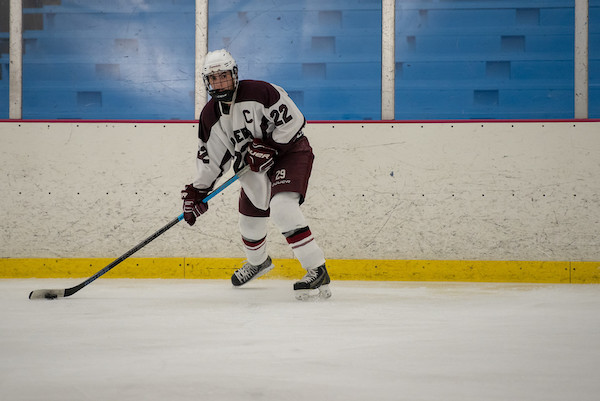 Captain Ben Schwartz ’19 with the Puck.him on JV hockey or varsity lacrosse, so having him “wasn’t that big of an adjustment,” said Brosgol. “He’s great to be around and talk to and we all really enjoy practice. He and [Assistant] Coach Felix make a great coaching duo.” The players also note that the coaches are demanding of them off the ice; Synowiez and Felix hold the players accountable for missing class and missing the homework Synowiez assigns them, which is typically watching game film. This sense of commitment and discipline on the team may be a part of the reason why the boys have been resilient in recovering their record.
Captain Ben Schwartz ’19 with the Puck.him on JV hockey or varsity lacrosse, so having him “wasn’t that big of an adjustment,” said Brosgol. “He’s great to be around and talk to and we all really enjoy practice. He and [Assistant] Coach Felix make a great coaching duo.” The players also note that the coaches are demanding of them off the ice; Synowiez and Felix hold the players accountable for missing class and missing the homework Synowiez assigns them, which is typically watching game film. This sense of commitment and discipline on the team may be a part of the reason why the boys have been resilient in recovering their record.
As for the rest of the season, the Raiders are excited to see what they can do and are focused on attaining their goals. “We are definitely looking forward to the rivalry matchups against Suffern and Mamaroneck. Those two teams tied 2-2 recently, so it would be big for us to win those games and separate ourselves from the pack,” said Bock. Beyond that, the Raiders aspire to win the section and state championships.
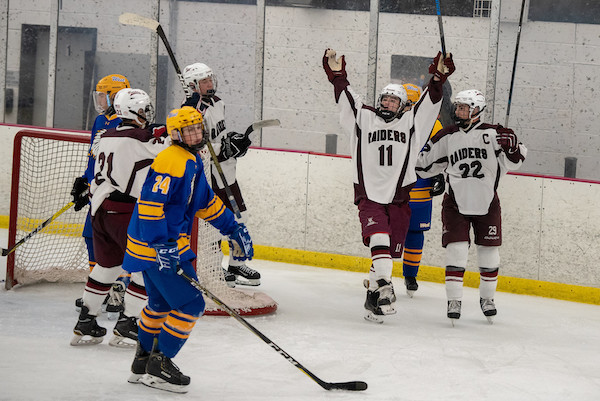 Team celebrates a goal.Be sure to come watch and support the team in their remaining regular season games and the playoffs!
Team celebrates a goal.Be sure to come watch and support the team in their remaining regular season games and the playoffs!
Photos by Jon Thaler. See more here.














